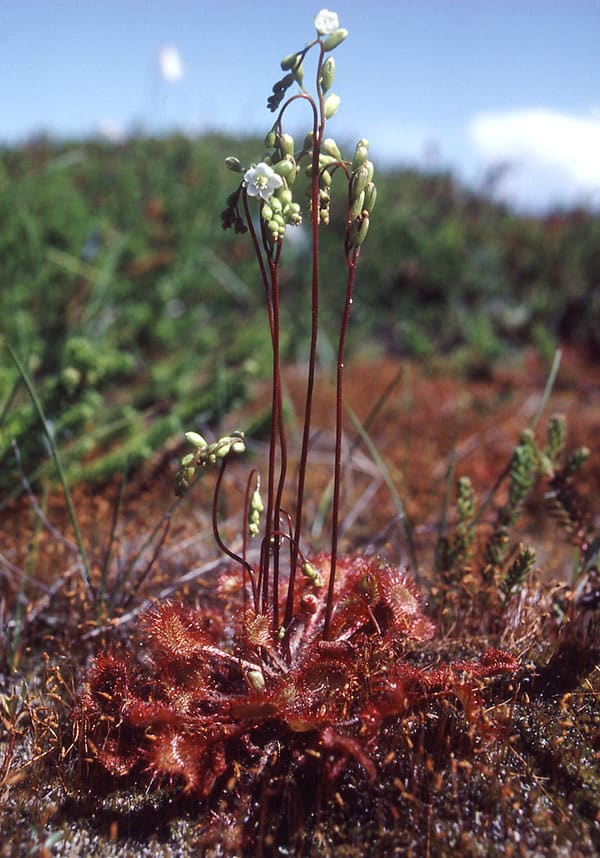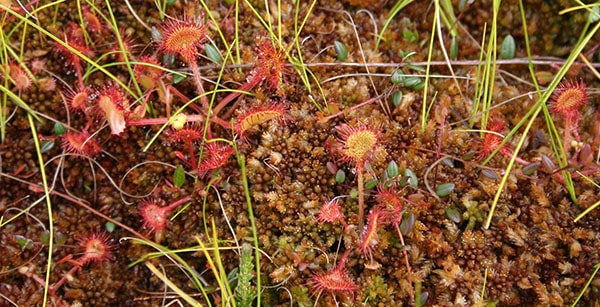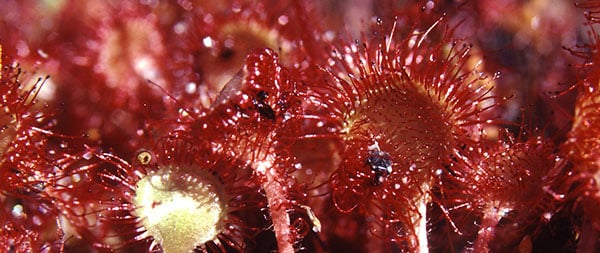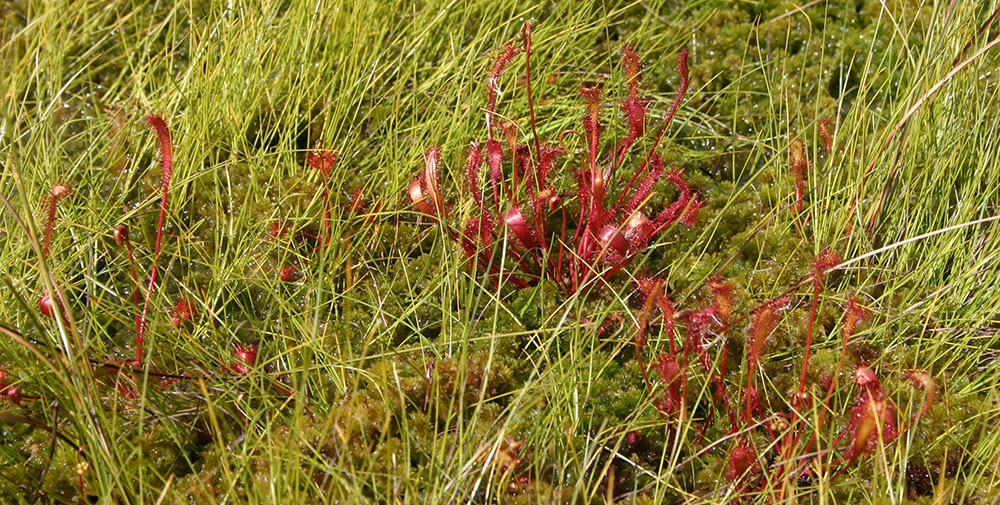Rettelser/Corrigenda:
CORRIGENDA to first and second print - Last update Dec. 2011.
Óscar Sánchez Pedreja has kindly provided the following two corrections:
Page 198, Fig.260B: This photograph seems to correspond to Orobanche cernua var. australiana (F. Muell.) Beck in Engl., Pflanzenr., Orobanchac.: 128 (1930). Syn.: ≡ Orobanche australiana F. Muell. (1882) [basionymum / basionym]; ≡ Orobanche cernua L. f. australiana (F. Muell.) Beck (1890). Ic.: a, habit [Australian Plant Image Index - (accessed 4 April 2006)].
Page 203, Fig. 265E and F: These photographs seem to correspond to Cistanche tubulosa (Schenk) Hook. f., Fl. Brit. Ind. 4: 324 (1884). Syn.: ≡ Phelypaea tubulosa Schenk (1840) [basionymum / basionym]; ? = Cistanche carnosa Pax in Bot. Jahrb. Syst. 39: 651 (1907); – Cistanche lutea sensu Wight (1850), non Phelypaea lutea Desf. (1798). Ind. loc.: "The type ... was collected in Sinai, between Suez and el-Tor [Egypt] by Roth & Erdl" (cf. L. Boulos, 2002: 95). Ic.: t. "354 Cistanche tubulosa (Schenk) Wight" in N. Feinbrun-Dothan (1978).
--------------------------------------------------
CORRIGENDA relevant only to the first print - Last update January 2011.
Meaning disturbing mistakes and additional notes:
Page IX line 3 from below: Read 336. - Last line: Read 337.
Page X line 1: Read 342. - Line 4 Read Box 9.
Page 9, Box 3: The letters C and S is lacking but inserted on Fig. to the left.
Page 14, Fig. 13C: The more yellowish colour is due to less chlorophyll as a result of less light.
Page 21, Table 2: There are no stem parasites in Orobanchaceae. See improved diagram here.
Page 33 end of page: Read (Fig. 34).
Page 35 line 4 from below: Read (Figs. 36-37 and 39).
Page 36 line 20: Replace 9B with 10B.
Page 44 second column: Delete (Fig. 486).
Page 48, Fig. 60: Arrow is lacking but inserted on Fig. to the left. See also Fig. 87.
Page 49, Fig. 62: Substitute 'Thank you for answerings' with 'embryo sacs'.
Page 53 line 14 from below: Read 162B.
Page 66, Fig. 85: The section photographed measures 14 cm from edge to edge.
Page 73 first culumn last line: Delete (Delete Fig. 485).
Page 77 first column last line: Read page 87.
Page 88 second column line 9: Replace 'Fig. 113E' with 'as in Fig. 97A'.
Page 83 first colum line 2 from below: Read Table 3.
Page 90, Fig. 115: Replace 1846 with 1847.
Page 99 line 20 from below: Replace 141C with 143C.
Page 101 second column line 7: Replace 127B with 128B.
Page 107 line 18 from below: Read 140A.
Page 119, Fig. 160B: The identification is incorrect since P. crysocladon is triseriate but the photograph shows a biseriate specis, possibly P. quadrangulare although the stem does not show signs of being angular.
Page 120 second column line 1: Read Figs. 161-162. --Line 7: Read 162B.
Page 141 line 5: Replace 184D with 185.
Page 155 second column line 1: Read Box 3.
Page 164 first column line 9: Read Chapter 5.
Page 167 line 18 from below: Replace 229 with 231.
Page 171 first column line 19: Read 227C. - Line 10 from below: 23000, read 2300-4200 m elevation.
Page 178 line 12 from below: Read 238E.
Page 196 second column line 4: After 258) replace has with having.
Page 199 second column line5: Read 191.
Page 202 second column line 7-8: Replace 'host is Eryngium campestre' with hosts are species of Eryngium'.
Page 205 first column line 3: Read 250.
Page 206 first column line 3 from below: Read 267.
Page 213 first column line 18 from below: Read Fig. 275. Line 2 from below: Read Fig. 273.
Page 215, Fig. 278B: Reverse (left) and (right). Detached androecia are to the right.
Page 218 first column line 4: Read Fig. 283C.
Page 220 first line of section Cytinaceae: Read page 215.
Page 234: Fig. 301C-E most likely show Rhizanthes infanticida as in Figs. 299-300. It is present in Sumatra while R. zippelii, as stated in the text, is endemic to Java. However, it has not been observed since World War II.
Page 235 first column line 4: Read 299-301C-D. Line 19: Delete (Figs. 301C-E). End of second paragraph: Delete the sentence 'hence the three photos ....'
Page 238 first culum line 7: Read (Fig. 305).
Page 239 first culumn line 1: The web address page 420 is no longer available.
Page 250: A fourth species of Lophophytum (L. rizzoi from Brazil) was descibed in 2004.
Page 253: Lathrophytum peckoltii is now also found in the province Goiás, Brazil.
Page 257 second column line 7: Substitute ovulary with ovary.
Page 263 second paragraph line 3: Substitute all four with all five.
Page 265 second column line 1-2: Read Figs. 248A-B. Line 5 from below: Read Fig. 251.
Page 269 Second paragraph last line: Read 308.
Page 275, Fig. 347: Substitute Fig. 345 with 346 (two times).
Page 278, Fig. 351C: The letter H is lacking but inserted on Fig. to the left.
Page 285, Fig. 357B: V is parasite vessel members (delete host).
Page 289 second paragraph line 10: Replace 260 with 360.
Page 291, Fig. 362B: Arrow is lacking, but Fig. 362C shows the labyrinth wall.
Page 300 second column line 20: After 'host plants' add 'and the host plants themselves'.
Page 304 first column line 1: Read 494.
Page 318 second column line 11 from below: Read 341.
Page 331 first column line 15 from below: Read 337.
Page 333 second culumn line 2: Replace 495 with 494.
Page 345 second paragraph line 10: Read 418D.
Page 352 first column line 9: Read 234.
Page 348 second column line 2: Read 420.
Page 358 first column line 3: Replace 373E with 373F.
Page 360: Fig. 436B shows Cuscuta epithymum ssp. trifolium (C. epilinum is not known from alfalfa, hence the statement Page 360 column 2 is an error). Line 15: Delete (Fig. 436B).
Page 382 second paragraph line 7: Phoradendron divaricarum and P. juniperinum replace with 'Phoradendron juniperinum and Arceuthobium divaricatum'.
Page 393 first column line 5 from below: Read 492.
Page 394 second column line 22: Substitute agreement with disagreement.
Page 397 second paragraph last line: Replace Fig. 225 with p. 227.
Page 400, Fig. 482: A is Embothrium (photo by Bonifacino) and B is Tristerix.
Page 401 first column line 17: Replace 404D with 404E.
Page 403: Fig. 484 shows Plicosepalus kalachariensis (closely related to P.curviflorus).
Page 403: Fig. 485 shows Erianthemum ngamicum (closely related to E. dregei).
Page 408 first column line 5 from below: Read 274B-C.
Page 410 second column line 8: Replace 412-413 with 412E-F and 414.
Page 417: Publication year for Calder & Bernhardt is 1983.
Linguistic/spelling mistakes:
Page 3 line 14 & 15 from below: Hold fast is one word (holdfast).
Page 17 second column line 2: Read shrub.
Page 41, Fig 48 line 2: Substitute has with have.
Page 46 first culumn last line: Read flower.
Page 58, Fig. 73: Read Ecuador.
Page 60, Fig. 76A: Read xeromorph. Fig 76C: Read massive.
Page 63, Fig 79A: Read disperses.
Page 64, Fig. 80: Read Ecuador.
Page 69, Fig. 89. Read Hoedspruit.
Page 74 first column line 6: Delete one r in occurr.
Page 82 second column line 6-7: Read Islands.
Page 103 second column line 2-3: Read Argentina.
Page 105 Fig. 135: Read furrowed.
Page 107 Fig. 140: Delete s in occurs.
Page 113 second column line 3: Delete the dot (.) after Mountains.
Page 114, Fig. 152. Read New Jersey.
Page 119, Fig. 160. Read male flower.
Page 163 first column line 3: Delete second u in haustoriua.
Page 166, Fig. 220: Read New Jersey.
Page 170 line 9 from below: Read Argentina.
Page 173, Fig. 231: Read New Jersey.
Page 180, Fig. 239: Read hemiparasitic and Baja California.
Page 182 second column, end of line 9: Substitute is with it.
Page 189 second column line 6: Delete were.
Page 191, Fig. 252: Delete the dot (.) after haustorium.
Page 201 first column line 3: Read 100,000. - Fig. 263A. Read California.
Page 204 second column line 3 from below: Read 70,000.
Page 237, Fig. 304: Substitute watert with water.
Page 244, Fig. 313 line 5 from below: Substitute have with has.
Page 245 first column line 13: Read 'to a moss archegonium'.
Page 247, Fig. 315: Read 2700 m.
Page 256 second column line 3 from below: Read hosts.
Page 264 first column line 12: 'be' shall be 'by'.
Page 266, Fig. 337: Read Boschniakia.
Page 267 second column line 3: Read 'internal factors include'.
Page 277, Fig. 349 line 6 from below: Substitute cells with cell.
Page 278, Fig. 371 line 4: Delete s in points.
Page 301 first column line 6 from below: Read ribulose.
Page 302, Fig. 368 line 2: Read emerges
Page 310 second column line 2: read halodendron
Page 316 first column line 4: replace 'at least 343' with 'about 400'.
Page 335, Fig. 408 line 4: Replace has with have.
Page 343 first column line 10: Substitute that with than.
Page 351 line 12 from below: Read 'up to about'.
Page 367 line 4 from below: Read 'Table'.
Page 372, Fig. 450 last line: Read 'permission by New P...'.
Page 378, Fig. 458: Read short shoot.
Page 386 second paragraph line 9: Substitute in with is.
Page 391 second column second paragraph: The sentence 'Production of such leafy…reproduction.' can be deleted.
Page 400 second column line 19: Delete are.
Page 405 first column line 10 from below: Delete one 'perhaps'.
Page 411, Fig. 493. Read Hawaiian.
Page 413 Figure legend: Read shown.
Notes:
'Hemiparasitic scrophs' is used a number of times in Chapter 3 meaning hemiparasitic members of the family Orobanchaceae. Strictly speaking, after the transfer of parasitic species from Scrophulariaceae to Orobanchaceae there are no longer such plants as hemiparasitic scrophs.
Page 310 Fig. 374. Phoradendron villosum is now by specialists considered a synonym of P. serotinum subsp. tomentosum. However, this combination has not yet been accepted by the International Code of Botanical Nomenclature which is also considering the name P. leucarpum for P. villosum.
Page 371. Rotboelia cochinchinensis = Rottboellia cochinchinensis.
Page 420. The link 'www2.winchester etc.' to Sifakas eating Hydnora seems to be broken and the video may no longer be available on the web.

















